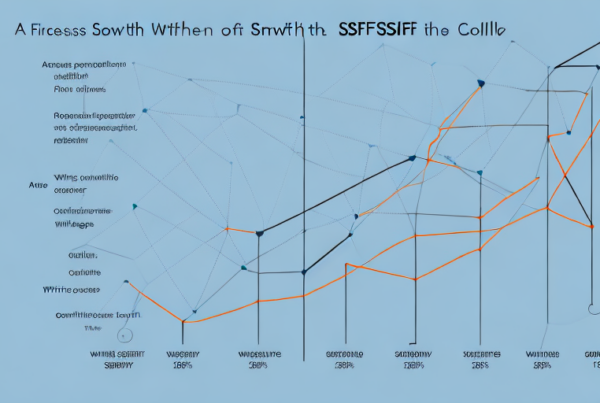When it comes to planning for retirement, one consideration that many Australians make is the establishment of a self-managed super fund (SMSF). SMSFs are becoming increasingly popular among those who wish to take control of their retirement savings and manage their investment portfolios. In this article, we will explore the role of SMSF management in achieving financial independence post-retirement. We will provide a comprehensive guide to understanding SMSFs, establishing your own SMSF, managing your SMSF investments, and planning for your retirement goals.
Understanding SMSF Management
Before establishing an SMSF, it is essential to understand the nature of SMSF management. An SMSF is a superannuation trust structure that consists of four or fewer members, where all members are also trustees. SMSFs are managed by the trustees, who also have the responsibility of making investment decisions for the fund. SMSFs provide greater control and flexibility over investment decisions, allowing you to tailor your investment strategy to your personal financial goals.
Managing an SMSF can be a complex task, and it requires a significant amount of knowledge and management skills. However, the benefits of SMSF management can be significant, making it an attractive option for those who wish to have greater control over their retirement savings.
What is a Self-Managed Super Fund (SMSF)?
An SMSF is a superannuation fund that is managed by its members, who are also the trustees. SMSFs are regulated by the Australian Taxation Office (ATO), and trustees are required to abide by strict compliance regulations. This means that SMSFs are subject to the same rules and regulations as other superannuation funds, but they offer greater flexibility and control over investment decisions.
One of the key advantages of SMSFs is that they allow members to choose the investments that the fund holds. This puts trustees in a position to make informed investment decisions that align with their retirement goals. However, it is important to note that an SMSF is not suitable for everyone, as it requires significant knowledge and management skills.
The Benefits of SMSF Management
The primary advantage of SMSF management is the ability to have full control over your investment decisions. SMSFs provide greater flexibility in terms of choosing investment options such as property, direct shares, and managed funds. This means that you can tailor your investment strategy to your personal financial goals and risk tolerance.
In addition to greater control over investment decisions, SMSFs also offer tax advantages. For example, SMSFs can benefit from concessional tax rates on investment income, capital gains tax exemptions, and franking credits. SMSFs can also be tailored to meet specific needs, such as estate planning through the use of binding death benefit nominations.
The Risks and Responsibilities of SMSF Management
While SMSFs provide many benefits, they also come with risks and responsibilities. As trustees, you must comply with strict regulatory requirements and ensure that the fund is managed appropriately. This involves keeping accurate records, ensuring regular audits are completed, and adhering to the investment strategy outlined in the trust deed.
Failure to meet regulatory requirements can result in severe penalties, so it is essential to seek professional advice before establishing an SMSF. Professional advice can help you understand the risks and responsibilities associated with SMSF management, and can help you develop an investment strategy that aligns with your personal financial goals.
In conclusion, SMSF management can provide greater control and flexibility over investment decisions, allowing you to tailor your investment strategy to your personal financial goals. However, it is important to understand the risks and responsibilities associated with SMSF management, and to seek professional advice before establishing an SMSF.
Establishing Your SMSF
Establishing a Self-Managed Super Fund (SMSF) is a great way to take control of your retirement savings. However, it requires careful consideration and planning to ensure that it is set up correctly and compliant with the Australian Taxation Office (ATO) regulations. Before starting an SMSF, it is advisable to seek professional advice from an accountant, financial planner, or SMSF specialist.
Here are the key steps to establishing your SMSF:
Choosing the Right SMSF Structure
The first step in establishing an SMSF is to choose the right structure. There are two options available: individual trustees or a corporate trustee. The decision to choose either option will depend on your personal circumstances and investment goals.
If you choose an individual trustee structure, each member of the fund must also be a trustee. This option may be suitable for small funds with a simple investment strategy. However, it can become complicated if one of the members passes away or becomes incapacitated.
A corporate trustee structure is preferred for larger funds. In this structure, a company acts as the trustee, and each member of the fund is a director of the company. This option provides more flexibility and protection for the members and simplifies the process of adding or removing members from the fund.
Setting Up Your SMSF Trust and Trustee
The next step is to establish your SMSF trust and trustee. An SMSF trust is a legal arrangement that holds your superannuation assets for the benefit of all members. Trustees are responsible for managing the SMSF and making investment decisions on behalf of the fund.
When setting up your SMSF trust, you need to ensure that it is compliant with the ATO regulations. You will need to apply for an Australian Business Number (ABN) and a Tax File Number (TFN) for your SMSF. You will also need to set up a bank account for the fund and register it with the ATO.
The trust deed outlines the rules for the operation of the SMSF and must be updated regularly to ensure compliance with regulatory requirements. It is essential to seek professional advice when drafting your trust deed to ensure that it is compliant with the ATO regulations.
Creating an Investment Strategy
Once your SMSF has been established, you need to create an investment strategy that aligns with your retirement goals. The investment strategy outlines the fund’s objectives, risk profile, asset allocation, and diversification.
It is essential to ensure that your investment strategy is diversified to reduce the risk of losing your retirement savings. You should consider investing in a range of assets, including shares, property, and cash. You should also consider the liquidity of your investments and the expected return on investment.
Trustees must regularly review the investment strategy to ensure it remains aligned with the fund’s objectives. It is also essential to seek professional advice when creating and reviewing your investment strategy.
In conclusion, establishing an SMSF requires careful consideration and planning. It is crucial to seek professional advice when setting up your SMSF to ensure that it is compliant with the ATO regulations. By following the key steps outlined above, you can ensure that your SMSF is set up correctly and aligned with your retirement goals.
Managing Your SMSF Investments
One of the primary advantages of SMSF management is the ability to control your investments. Here are some key considerations for managing your SMSF investments:
Diversifying Your SMSF Portfolio
One of the most important strategies for managing your SMSF investments is diversification. Diversification involves spreading your investments across different asset classes, such as property, shares, and fixed interest. This helps to reduce risk and protect your investment portfolio from volatility.
When it comes to property investments, you might consider investing in both residential and commercial properties. Residential properties tend to be more stable, while commercial properties offer higher rental yields. Similarly, when investing in shares, you might consider investing in both local and international companies to spread your risk across different markets.
Monitoring and Adjusting Your Investment Strategy
It is essential to monitor and adjust your investment strategy regularly. This involves assessing your investment performance, making changes to your asset allocation, reviewing your risk profile, and rebalancing your portfolio. By regularly reviewing your investment strategy, you can ensure that it remains aligned with your retirement goals and current market conditions.
When reviewing your investment strategy, you might consider seeking advice from a financial advisor or investment professional. They can provide valuable insights and help you make informed decisions about your investments.
Tax Considerations for SMSFs
Another critical consideration for managing your SMSF investments is tax planning. SMSFs offer tax advantages such as concessional tax rates, capital gains tax exemptions, and franking credits. However, it is essential to ensure that your SMSF complies with the relevant tax laws and regulations to avoid any potential penalties.
When it comes to tax planning, you might consider strategies such as making concessional contributions to your SMSF, which are taxed at a lower rate than your personal income tax rate. You might also consider making non-concessional contributions, which are not taxed in your SMSF but may be subject to other tax implications.
Overall, managing your SMSF investments requires careful planning, monitoring, and adjustment. By diversifying your portfolio, regularly reviewing your investment strategy, and considering tax planning strategies, you can maximize your returns and achieve your retirement goals.
Planning for Retirement with SMSF
When planning for retirement with SMSF, it is essential to consider your retirement goals and the income you will need to support your lifestyle. Here are some key considerations for planning your retirement with SMSF:
Determining Your Retirement Goals
The first step in planning for retirement with SMSF is to determine your retirement goals. This involves assessing your current financial position, projecting your retirement income needs, and developing a plan to achieve those goals.
One important factor to consider when determining your retirement goals is your desired retirement lifestyle. Do you want to travel extensively, or would you prefer to stay close to home and spend time with family? Do you plan to downsize your home and reduce your expenses, or are you looking to maintain your current standard of living?
Another factor to consider is your health and potential healthcare costs in retirement. As you age, your healthcare needs may increase, and it is important to plan for these expenses.
Calculating Your SMSF’s Retirement Income
The next step is to calculate your SMSF’s retirement income. This involves considering the investment returns, pension payments, fees, taxes, and other relevant factors that will affect your retirement income. By having a clear understanding of your SMSF’s retirement income, you can develop a plan to support your lifestyle in retirement.
When calculating your SMSF’s retirement income, it is important to consider the potential risks and volatility of different investment options. While higher-risk investments may offer the potential for higher returns, they also come with a higher level of risk. It is important to balance risk and return when selecting investments for your SMSF.
Transitioning from Accumulation to Pension Phase
When you reach retirement age, you will need to transition your SMSF from the accumulation phase to the pension phase. This involves converting a portion of your SMSF into a pension and making regular pension payments. By carefully managing this transition, you can ensure that you receive regular income to support your retirement lifestyle.
It is important to work with a financial advisor or SMSF specialist when transitioning from accumulation to pension phase. They can help you navigate the complex rules and regulations surrounding SMSFs and ensure that you are making the most of your retirement savings.
Overall, planning for retirement with SMSF requires careful consideration of your retirement goals, SMSF’s retirement income, and the transition from accumulation to pension phase. By taking the time to develop a comprehensive retirement plan, you can enjoy a comfortable and fulfilling retirement.
Conclusion
Establishing and managing an SMSF can play a critical role in achieving financial independence post-retirement. By taking control of your investment decisions, you can tailor your investment strategy to your personal financial goals. However, SMSF management comes with risks and responsibilities, requiring careful planning, ongoing management, and compliance with regulatory requirements. By following the steps outlined in this article, you can establish your SMSF, manage your investments, and plan for your retirement goals.




